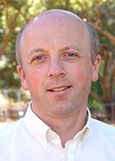Saturday, 11 August, 2018, 2 pm - 4 pm
Queensland University of Technology, Gardens Point Campus, P Block Room P421, 2 George Street, Brisbane 4000
- Link to Map of QUT Gardens Point Campus: https://www.qut.edu.au/about/campuses-and-facilities/gardens-point-campus/maps-and-getting-here
On 8 March 2014, Malaysia Airlines flight MH370 went missing on a flight from Kuala Lumpur to Beijing with 239 passengers and crew on board. Signals transmitted by the aircraft's satellite communications terminal to Inmarsat's 3F1 Indian Ocean Region satellite indicated that the aircraft continued to fly for several hours after loss of contact. The aircraft remains missing despite the largest, longest and most technically challenging search in history.
- Neil Gordon is the head of the Data and Information Fusion department at Australia's Defence Science Technology Group, which was consulted in the aftermath of the plane's disappearance. Neil will describe how mathematical and statistical modelling methods have been used to define the search zone in the southern Indian Ocean. (A short book is freely available for download from http://www.springer.com/us/book/9789811003783)
- Peter Foley is the General Manager Surface Safety Investigation at Australian Transport Safety Bureau, and Program Director for Australian Transport Safety Bureau Bureau’s search for MH-370. Peter will further discuss the science that determined the search zone, and the methods used to search the deep ocean floor in a remote area of the Indian Ocean.
Speakers:
Peter Foley
Mr Foley joined the ATSB in 1999 after a career at sea as a marine engineer with Australian shipping companies, including ANL Ltd, the Commonwealth shipping line. After joining the ATSB, he held a number of roles prior to being appointed MH370 search Program Director including General Manager Surface Safety Investigations responsible for marine and rail safety investigations, the ATSB’s work on the reforms to the National Transport Regulatory framework, and the ATSB’s international programs. He has been responsible for performing and managing a large number of marine and rail investigations, many of them significant, and has represented the ATSB and Australia at many international meetings and conferences.
Mr Foley holds professional qualifications in marine engineering and transport safety investigation, degrees in both marine and mechanical engineering and a Graduate Diploma in Business Management.
Neil Gordon
Vaughan Clarkson (Chair)




